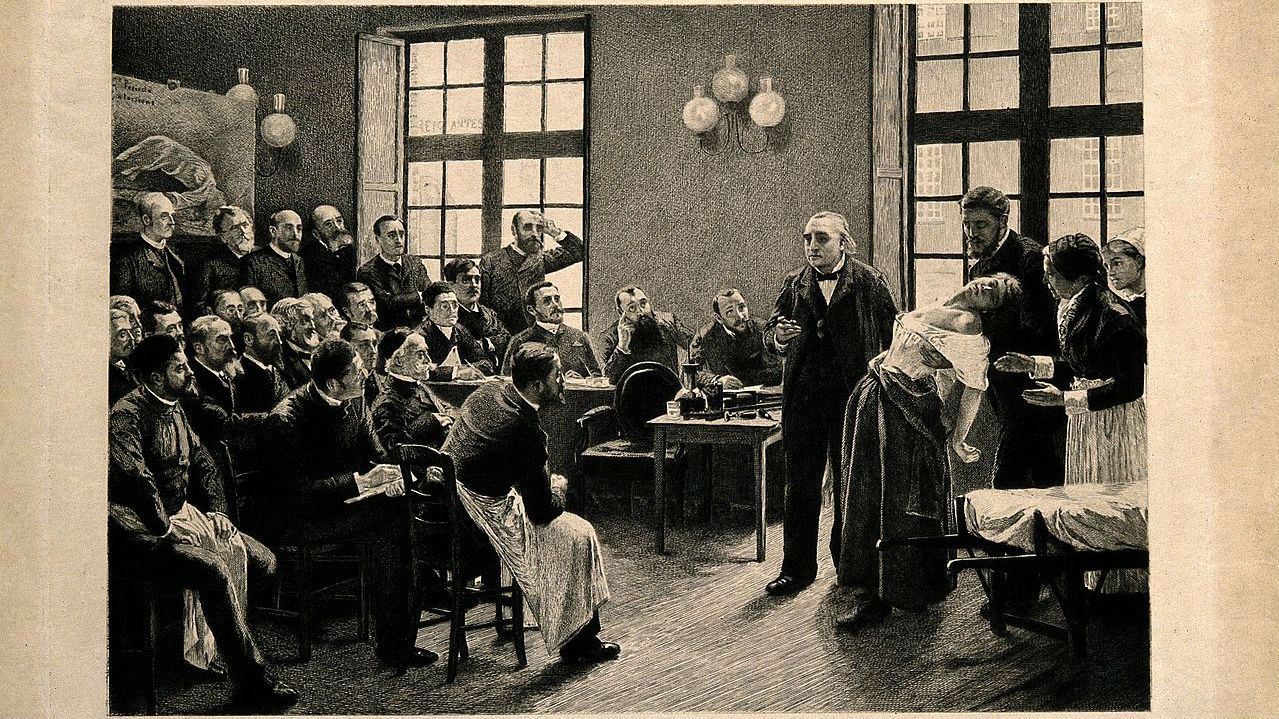Sexist science: From Aristotle to the modern day
A new book reveals the belief that women are inferior stretches back centuries

Boys like trucks and girls like dolls. Women are better with kids. Men are naturally promiscuous. That's science, right?
Despite growing scientific consensus that hardwired differences between the sexes are much smaller than once thought, stereotypes based on pseudoscience have proven stubbornly persistent - a global survey by Ipsos Mori this year found one in five people still believe women are inferior to men.
Inferior: How Science Got Women Wrong - and the New Research That’s Rewriting the Story, by British science journalist Angela Saini, explores how these "scientific" ideas came to be and why they persist.
The Week
Escape your echo chamber. Get the facts behind the news, plus analysis from multiple perspectives.

Sign up for The Week's Free Newsletters
From our morning news briefing to a weekly Good News Newsletter, get the best of The Week delivered directly to your inbox.
From our morning news briefing to a weekly Good News Newsletter, get the best of The Week delivered directly to your inbox.
According to Saini, many core assumptions about gender difference "do not stand up to detailed scrutiny", says the New Statesman's Helen Lewis, suggesting that "researchers have often fitted the evidence to their theories, rather than the other way round".
The world's oldest prejudice
Although the concept of scientific study as we know it did not take shape until the Age of Enlightenment in the 18th century, humans have been formulating theories about gender difference for thousands of years.
In his treatise Politics, Aristotle says: "The male is by nature superior to the female, except when something happens contrary to the usual course of nature." He also advised that women be regarded as lower than men but higher than slaves in the social hierarchy.
A free daily email with the biggest news stories of the day – and the best features from TheWeek.com
Expounding on the idea in his History of Animals, Aristotle then claimed: "Woman is more compassionate than man, more easily moved to tears, at the same time is more jealous, more querulous, more apt to scold and to strike."
The male character, he added, was more perfectly formed than the female, which was "more void of shame or self-respect, more false of speech, more deceptive, and of more retentive memory".
His observations began a trope that would go on to be a mainstay of sexist science - ignorance and misunderstanding of the female anatomy.
Aristotle believed female foetuses could take up to ten months to form in the womb, that female brains were less developed and that only fair-skinned women experienced orgasms.
His writings influenced early medical authorities such as the pioneering 1st century physician Galen, whose "biologic views concerning women were not seriously challenged until the seventeenth century", says the journal Pediatrics.
The age of reason
The Enlightenment celebrated objective scientific study as a force to sweep away ancient superstitions and herald a new era of knowledge and discovery.
However, science was often harnessed as a weapon against progress, particularly when it came to women's rights.
As pioneering women demanded access to higher education, the scientific establishment frequently fell back on the Aristotelian principle that the female of the species had less developed brains and, therefore, lower intellectual capacity.
One example cited by Saini's book is that of former US surgeon general William Hammond, who, in 1887, wrote that female students ran the risk of a nervous breakdown by attempting to master subjects such as algebra, geometry "and other mathematical branches of knowledge that could not be possibly of any use to them".
Eve figures as eminent as Charles Darwin believed scientific observation proved women's intellectual inferiority.
Based on mating practices in the animal kingdom, Darwin theorised that men had evolved to become more competitive than women and so would always attain a "higher eminence" in any field.
Given this, "there seems to me to be a great difficulty from the laws of inheritance, (if I understand these laws rightly) in [women] becoming the intellectual equals of man", he wrote to a US suffragist in 1882.
Darwin's observations of reproductive competition in the animal kingdom eventually gave rise to the idea that women "evolved to choose males prudently", says Smithsonian Magazine, while men "evolved to mate indiscriminately with as many females as possible".
More recent studies in the animal kingdom have shown that "females frequently mate with multiple males and produce broods with multiple fathers," adds the magazine, discrediting the simplistic idea of a promiscuous male and a monogamous female.
However, in the 19th century, the new field of evolutionary science was used to give an academic sheen to sexist prejudices, sometimes with disastrous consequences for women who deviated from their supposed biological imperative.
For instance, women who rejected their natural role as wives and mothers "risked being declared insane and committed to an asylum", says the Science Museum. "This was usually at her husband’s or father’s request, and she generally had no right to contest or appeal."
Furthermore, any overt display of female sexuality was seen as an aberration. Female masturbation was considered especially perverse and dangerous, linked to maladies ranging from cancer to that old Victorian standby "hysteria".
In the 1860s, Dr Isaac Baker Brown carried out several clitoridectomies to "cure" women of the habit, often without his patient's consent. As late as 1894, a US doctor carried out a similar operation on a 14-year-old girl, according to the Female Genital Mutilation Network.
The default patient
While the scientific establishment no longer endorses the more unusual prejudices of the past, subtle bias continues to permeate even modern research by excluding women altogether.
A 2006 study showed "women made up less than one-quarter of all patients enrolled in 46 examined clinical trials completed in 2004", Slate reports. This is especially concerning given that "women are more likely than men to experience adverse drug reactions".
In addition, many 20th century psychological studies were also carried out using all-male test groups, which can lead to "beta bias", in which a study's findings are said to be about human nature in general when, in fact, they reflect a male-focussed experience.
Regardless of the progress made in recent decades, evidence of lingering gender bias in scientific research proves that our "social and cultural constructs of gender" are still capable of "obstruct[ing] scientific development".
-
 Metaverse: Zuckerberg quits his virtual obsession
Metaverse: Zuckerberg quits his virtual obsessionFeature The tech mogul’s vision for virtual worlds inhabited by millions of users was clearly a flop
-
 Frank Gehry: the architect who made buildings flow like water
Frank Gehry: the architect who made buildings flow like waterFeature The revered building master died at the age of 96
-
 Is MAGA melting down?
Is MAGA melting down?Today's Big Question Candace Owens, Tucker Carlson, Laura Loomer and more are feuding